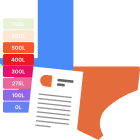Transform Your Teaching
with AI-Powered Worksheets
With ReadTheory’s Instant Worksheet Builder, you can create engaging, grade-appropriate worksheets tailored to your students in minutes. Spark curiosity, save time, and empower critical thinking with AI-powered tools designed for teachers like you.


Understanding the Canadian Government
In Canada, the government has three branches: the executive, the legislative, and the judicial. The executive branch includes the Queen, the Governor General, and the Prime Minister. The Queen, who is also the Queen of the United Kingdom, is represented by the Governor General in Canada. The Prime Minister is the leader of the country. In the legislative branch, elected representatives make the laws. They work in two places: the House of Commons and the Senate. The people of Canada vote to choose these representatives, which is why it's important for all adults to vote. The judicial branch, made up of Canada's courts, makes sure the laws are fair and are followed. Isn't it amazing to know how the government works in Canada?
Question 1
Who represents the Queen in Canada?
Prime Minister
Governor General
President
Senator
Member of the House of Commons
Question 2
Which branch of the Canadian government is responsible for making laws?
Executive
Legislative
Judicial
Education
Military
Question 3
Who is the leader of the country in Canada?
Queen
Governor General
President
Prime Minister
Senator
Question 4
Where do Canada's elected representatives work?
Parliament House
White House
Senate and House of Representatives
House of Commons and the Senate
City Hall
Question 5
What is the role of the judicial branch in Canada?
To make laws
To lead the country
To represent the Queen
To ensure laws are fair and followed
To run for elections
 or share via
or share via

Assign the ReadTheory pretest to determine students' reading levels.

Why Teachers Love
Instant Worksheet Builder?

Tailored Content for Every Student
Craft worksheets with passages and multiple-choice questions customized to your chosen topic and grade level, ensuring relevance and engagement.

Save Hours
of Prep Time
Our AI, Lexi, generates complete worksheets—passages, questions, and answers—in minutes, freeing you to focus on teaching, not planning.

Standards-Aligned Learning
Every worksheet is designed to boost reading comprehension and critical thinking, aligning seamlessly with State Standards to help your students shine.
Personalized teaching
for personalized learning
Browse worksheets created and refined by educators using Lexi—your source for inspiration and ready-to-use resources.


ReadTheory is free for Teachers to use.
Join thousands of educators using ReadTheory for free. Sign up today and start creating in just minutes!





